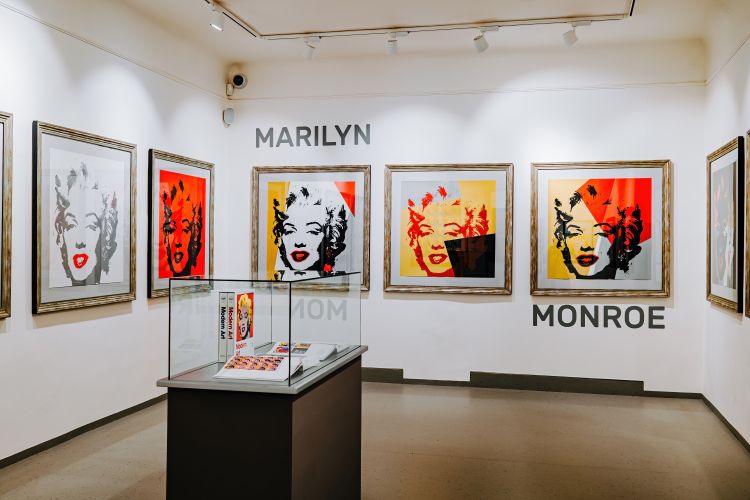Supreme Court Rules 2016 Warhol Images of Prince Violated Copyright Laws, Planting Seeds for an Upcoming Onslaught of AI Artwork
By Diane Lilli | Posted on May 30, 2023

Photo Source: kohanova1991 - stock.adobe.com
The Supreme Court ruled that the 2016 publication of an Andy Warhol illustration of Prince violated photographer Lynn Goldsmith’s copyright. The copyright violation was against the Andy Warhol Foundation (AWL).
The Warhol/Prince copyright case focused on “fair use” in copyright law, which allows the licensed usage of copyrighted artwork (or other works) in specific circumstances, including transformation of messaging and meaning.
Following the decisions, a dissenting justice disagreed, writing that she believes this ruling will stymie artists and their creations.
In the High Court’s opinion, Justice Sonia Sotomayor said that “Lynn Goldsmith’s original works, like those of other photographers, are entitled to copyright protection, even against famous artists.”
In dissent, Justice Elena Kagan wrote that the decision will “stifle creativity of every sort” and that it’s time for the Supreme Court to “go back to school” to learn about art.
This famous copyright case dates back to when Warhol, who died in 1987, used Goldsmith’s Prince photograph to design his own “Prince Series” while using Goldsmith’s copyrighted photo as the foundational piece for the illustrations.
In 2019, the 2nd Circuit Court of Appeals overturned a controversial 2019 New York Federal Court ruling that the Andy Warhol Foundation’s usage of Goldsmith’s copyrighted Prince photograph was legal. Goldsmith, a renowned high-profile photographer of celebrities, won her copyright lawsuit on this appeal when her attorneys argued that the Andy Warhol Foundation did not have permission to use her 1981 iconic Prince photo.
The iconic photos of Prince used by Warhol in the copyright case were taken by Goldsmith in 1981. At the time, Warhol was a global phenomenon, using his unique pop-art style of a base of photographs of iconic celebrities, that were then reimagined with wild splashes of bold, often neon, colors. Each celebrity image was often repeated, in two or four boxes, and sold for many millions of dollars. Warhol’s subjects included many current celebrities and deceased figures such as Elvis Presley, Marylyn Monroe, and Jackie Kennedy, among others.
Judge Gerard E. Lynch, in the prior appellate decision, wrote that, the “Prince Series works are substantially similar to the Goldsmith Photograph as a matter of law.”
This new decision rules against the estate of the late Andy Warhol, who died in 1987, and may open the door to similar lawsuits from the estates of other photographers who took iconic photos of celebrities that were then featured in the late artist’s collection.
In the new decision, the Supreme Court noted that it has“no opinion as to the creation, display, or sale of any of the original Prince Series works.”
The High Court added that in regard to the famous Warhol creation the “Campbell Soup Can,” those artworks are “fair use,” because they were quite different in purpose from the original Campbell’s images, which were advertising their cans of soup to the public.
Under copyright law, courts follow “the four fair-use factors” concerning works of art and copyright violations. These four factors include: the purpose and character of its use, the nature of any copyrighted work, the substantiality of the amount of the portion used, and the effect of the use on the potential market for or value of the work.
Indeed, the entire foundation of copyright laws and the doctrine of “the four fair-use factors” will certainly be tested in the near future.
This new Supreme Court ruling promises to become a heated decision that will be revisited often, as the onslaught of AI images arrives to the public eye. The copyright implications as it pertains to AI creations are expected to create a glut of new lawsuits and legal decisions, with a set of global laws needed to tackle the oncoming millions of works of art created by AI, including company logos, photographs, and more.
In the decision, the seven affirming justices wrote, “Goldsmith’s original works, like those of other photographers, are entitled to copyright protection, even against famous artists. Such protection includes the right to prepare derivative works that transform the original. The use of a copyrighted work may nevertheless be fair if, among other things, the use has a purpose and character that is sufficiently distinct from the original. In this case, however, Goldsmith’s photograph of Prince, and AWF’s copying use of the photograph in an image licensed to a special edition magazine devoted to Prince, share substantially the same commercial purpose.”
